
- Kaleb Johnson took advantage of his opportunity: Johnson wasn’t the Iowa Hawkeyes‘ starter until his final season, but he dominated in the run game once he had the chance.
- Johnson will compete with Jaylen Warren: The Pittsburgh Steelers‘ incumbent back will take all of the passing down work, but Johnson will be able to see at least some playing time as a rusher.
- Final chance to claim 25% off PFF+: Use code DRAFT25 and unlock access to player grades, fantasy tools and the 2025 Draft Guide
Estimated Reading Time: 5 minutes

PFF’s Fantasy Football Player Profile series delivers the most in-depth fantasy football analysis available for the 2025 season.
Using PFF’s exclusive data, we evaluate player performance, competition for touches and how teammates and coaching staffs will impact each player’s fantasy football outlook.
Last updated: 7:15 a.m. Tuesday, April 29
Click here for more draft tools:
NFL Draft Big Board | Mock Draft Simulator | NCAA Premium Stats
2025 PFF Draft Guide | Mock Draft Hub | Prospect Data Profiles
Draft Position Rankings
Player performance
Johnson was a backup to Leshon Williams during his first two seasons at Iowa, playing predominantly in short-yardage situations. Johnson’s numbers weren’t all that impressive in 2023, but he earned the starting job over Williams by the start of the 2024 season. Williams entered the transfer portal after the first three weeks of the season, allowing Johnson to play an even higher percentage of the offensive snaps.
Johnson was very impressive as a runner in his one season as a starter, averaging over 125 rushing yards per game. His rate of hitting big runs was among the best in the league. He ranks among the top 25 fastest running backs in the FBS from the last eight seasons, according to PFF’s tracking data, despite a below-average 4.57-second 40-yard dash at the combine. Johnson had the highest rate of zone plays among those running backs, but his quality of play in both zone and gap concepts was relatively similar. Johnson depended more on ideal situations than most running backs, dominating more than nearly every other running back on perfectly blocked plays. Still, he was only average compared to FBS backs on non-perfectly blocked plays.
While Johnson posts a respectable 86.3 career rushing grade, that is the lowest among the top 11 rookie running backs by consensus rankings. That was mainly due to his relatively average grades throughout 2023. He also has the least experience as a receiver, with just 36 total targets. He gained 63 receiving yards in his final collegiate game against Nebraska but was held to 10 receiving yards or fewer in nine of his 12 games.
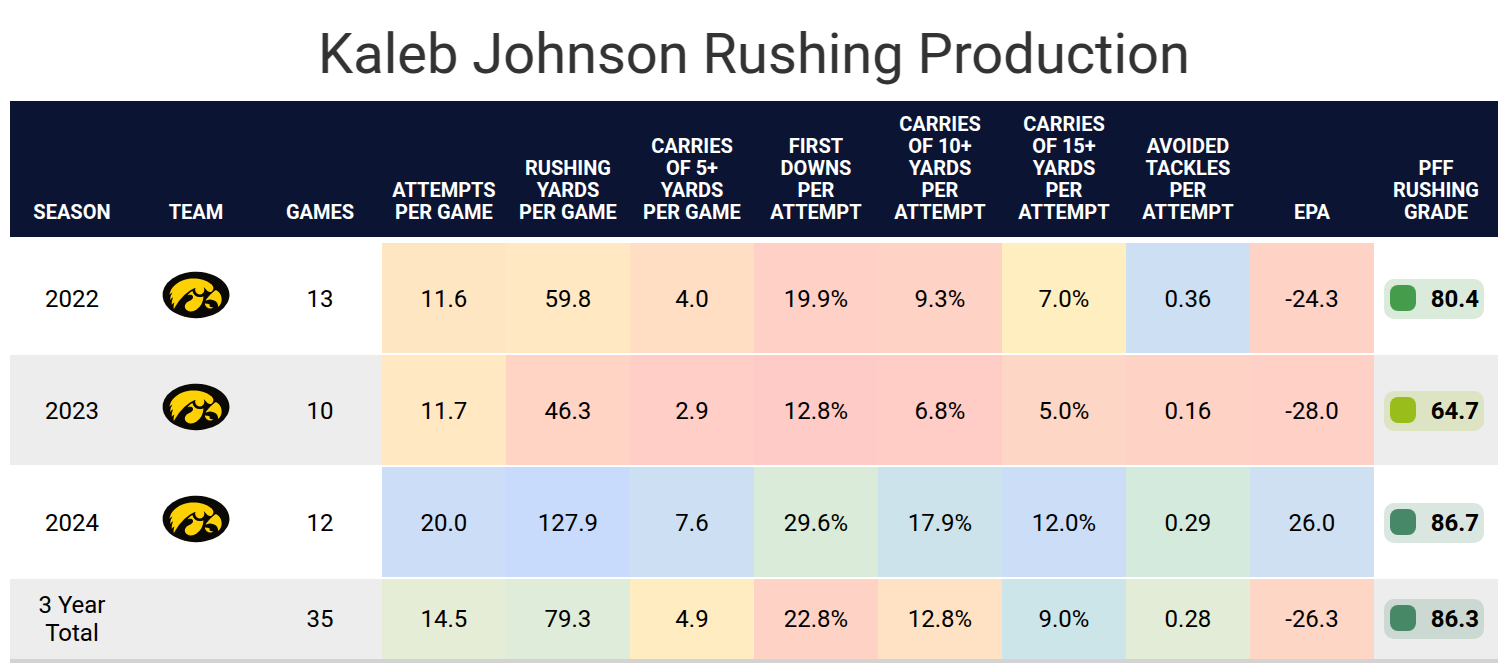
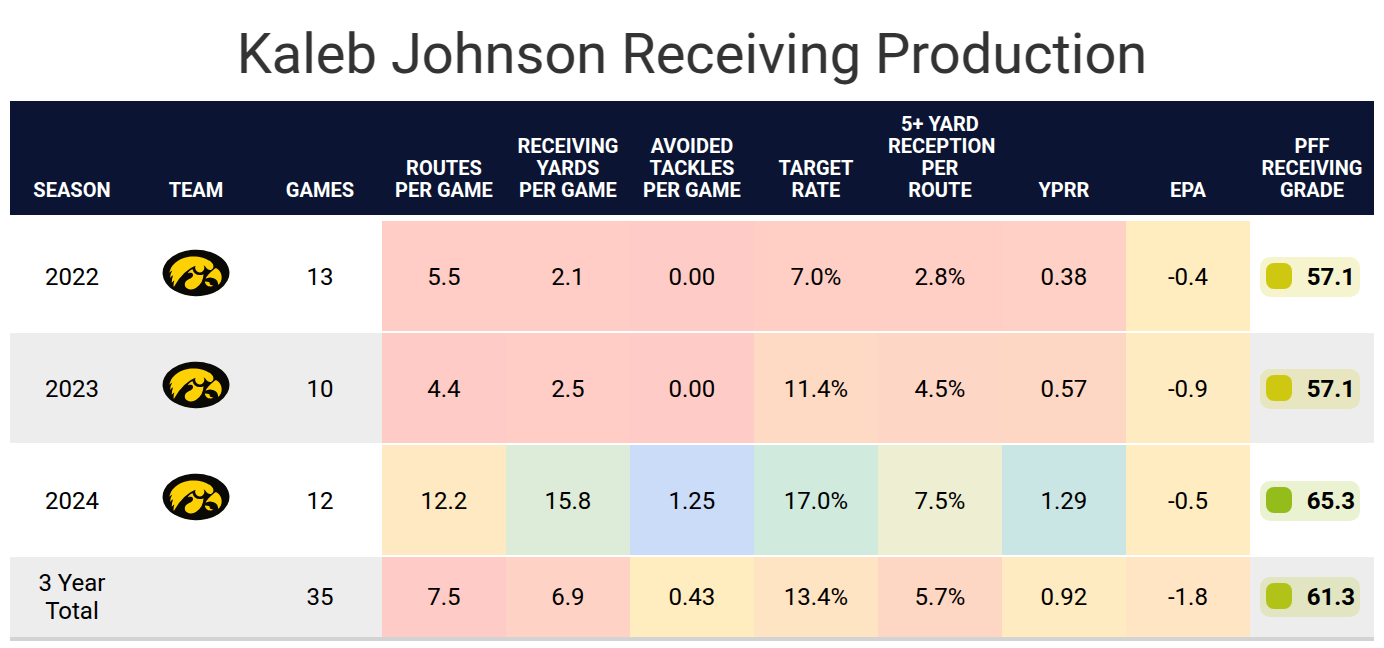
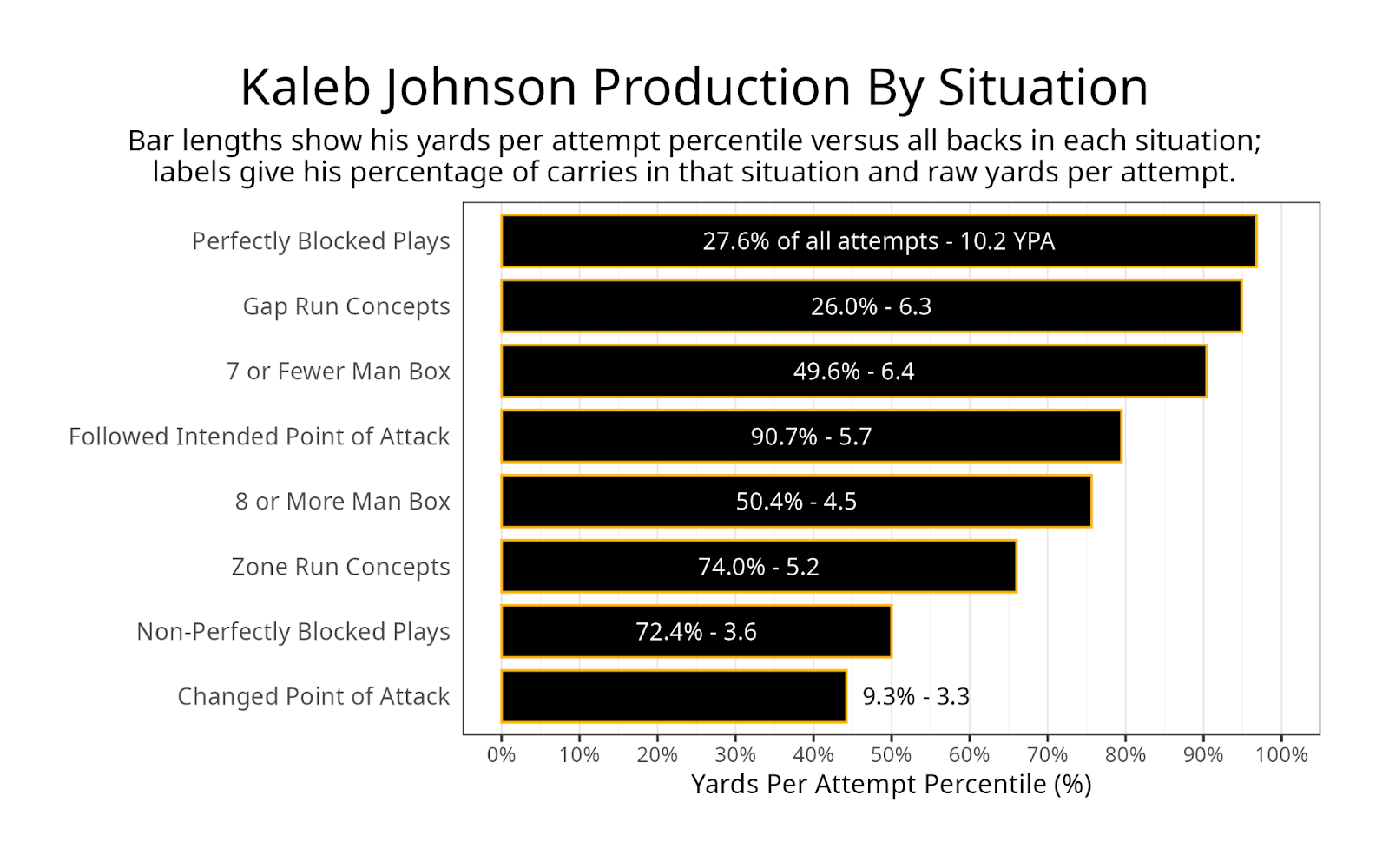
Projected role
Johnson only projects to be a two-down back in the NFL. Along with his lack of experience catching passes, he struggled as a pass protector. Johnson is athletically gifted enough to become a three-down back at some point in his career, but it’s unlikely to happen as a rookie.
He was selected by the Pittsburgh Steelers, who have one of the best third-down backs in the NFL in Jaylen Warren, whose snap rate on early downs has slowly but steadily improved from 25.2% as a rookie to 35.8% in 2023 and 37.2% over the last six weeks of last season once he was healthy. Warren seemed destined for an even larger role on early downs in 2025 thanks to his strong play and Najee Harris‘ departure.
Johnson will take the Harris role in the offense, but with Warren cutting into his playing time even more than Warren cut into Harris’ time. We should see Warren and Johnson in roughly a 50-50 split on early downs, while Warren takes all of the third downs. We could see one back reach 60% and the other 40% if one back starts out-performing the other.
The Steelers also added Kenneth Gainwell in free agency, who seems like injury insurance at this point. Cordarrelle Patterson is also on the roster, but he is just as likely to be involved as a wide receiver as he is a running back.
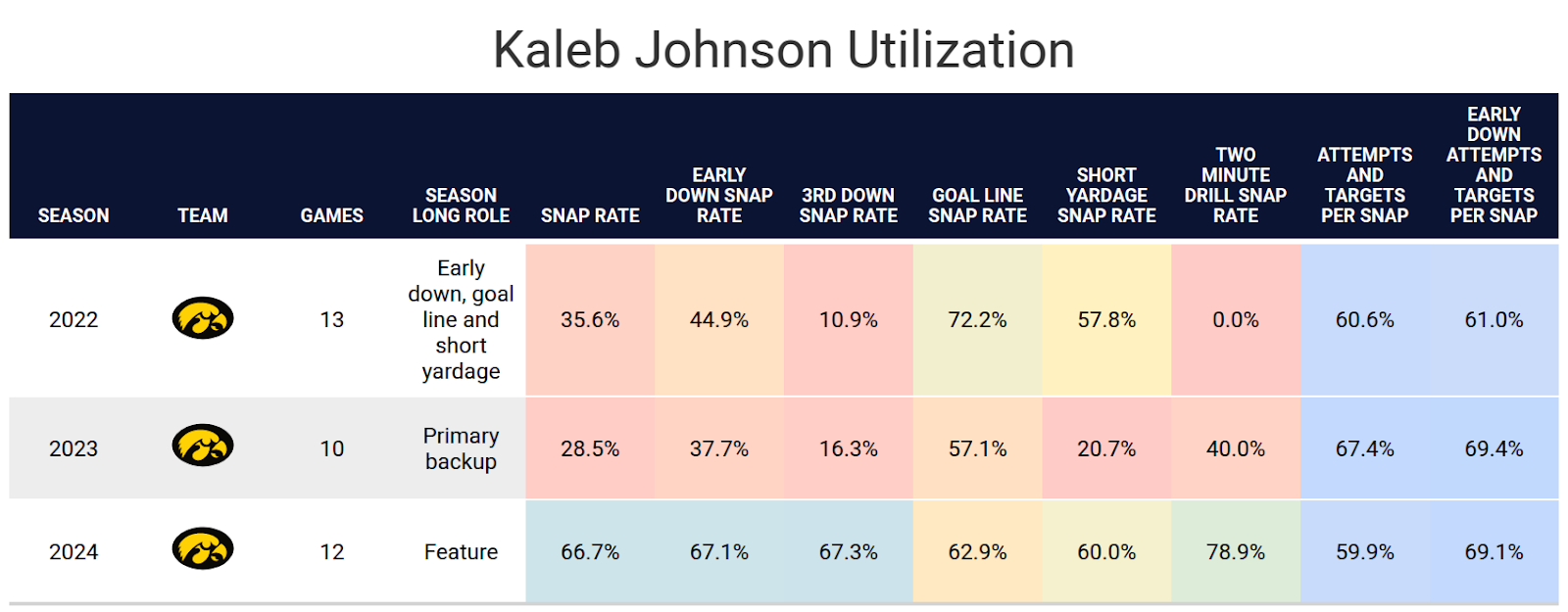
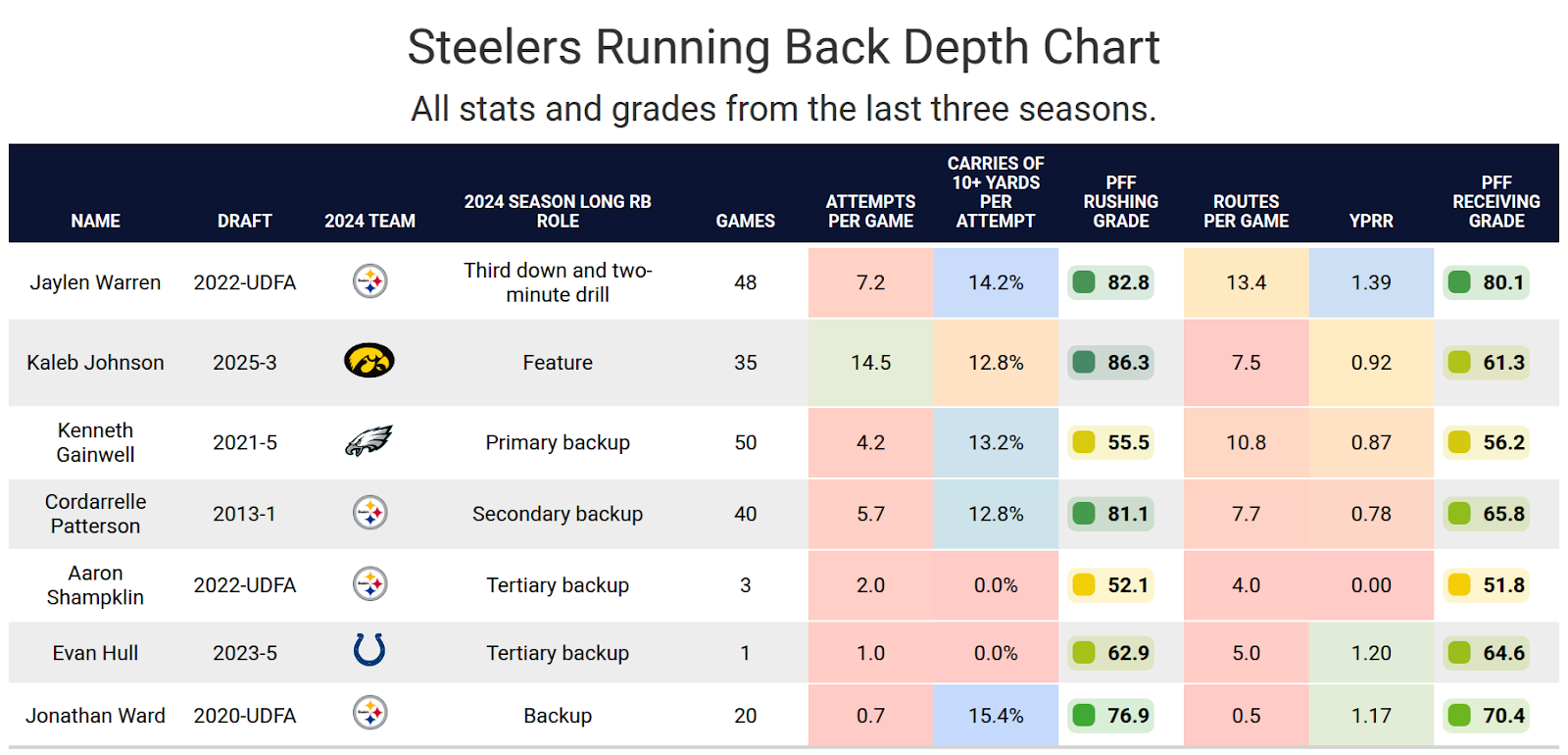
Impact of teammates
The good news for Johnson is that offensive coordinator Arthur Smith is the most run-heavy coordinator in the league. In 2023, both Najee Harris and Jaylen Warren finished in the top 24 in fantasy points, and this running back pair should be even better. A lot of Johnson’s value could depend on what happens at quarterback. If the Steelers add Aaron Rodgers, we could see their run rate change significantly. In which case, Johnson is much less likely to have fantasy value this season.
Smith is known for his zone-blocking schemes. The Steelers had the fourth-highest rate of using zone runs last season. Johnson is very experienced in zone runs but performed better in gap schemes. Warren also tends to play better in gap schemes, so it’s, at least, possible we see the team shift more towards a neutral use of zone runs.
The Steelers completely re-worked their offensive line last season, including three early picks on offensive linemen. First-round pick Troy Fautanu only played one game as a rookie due to injuries, while Mason McCormick played exactly as you would expect a fourth-round rookie to perform as a starter. While the offensive line seemed relatively average, the Steelers have also emphasized blocking among their tight ends, with Darnell Washington and Connor Heyward having decent run-block grades. Ideally, the youth and continuity on the offensive line can lead to some improvement, but we should expect the line to be roughly around league average.
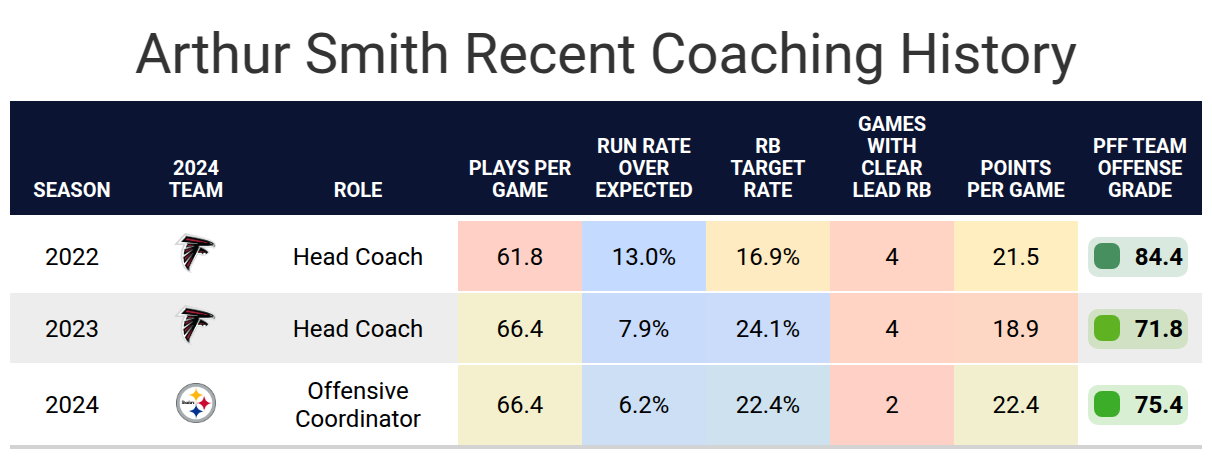
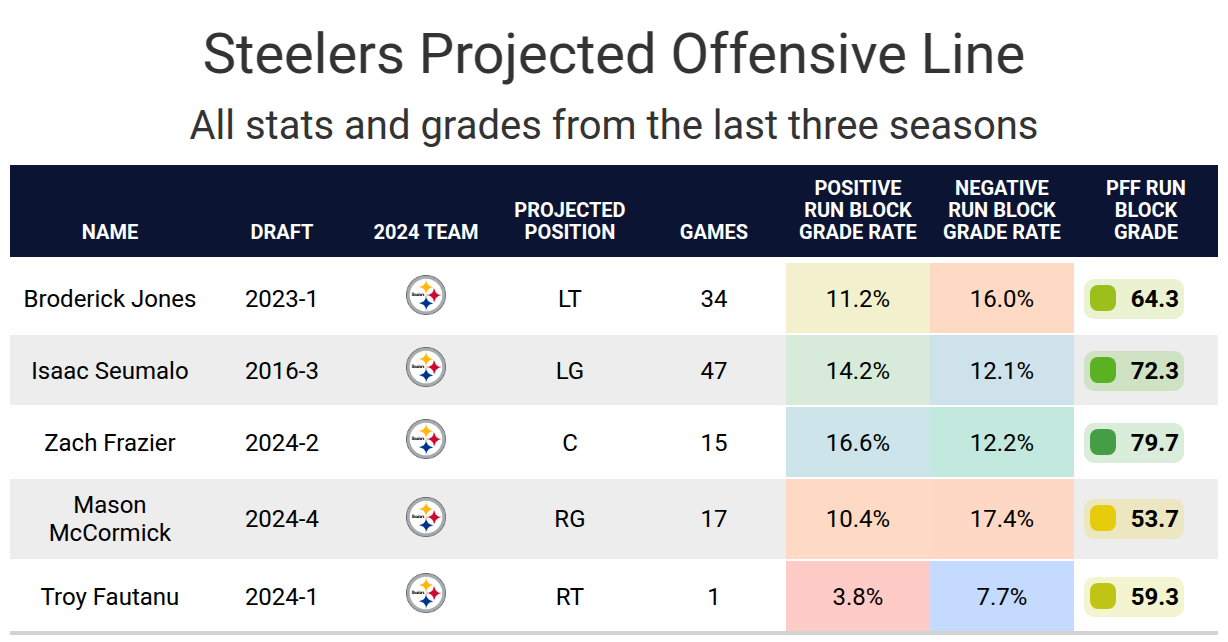
Bottom line
Johnson is likely to finish second in fantasy points among running backs on the Steelers. Still, he might be one of the most fantasy-relevant backups if the Steelers continue running at an exceptionally high rate.
Footnotes
- Statistics in tables and charts were chosen based on their ability to predict future fantasy performance on a per-game or per-opportunity basis or to describe the player relative to others at the same position.
- “Opportunities” are defined as passing dropbacks, rushing attempts and routes run as a receiver.
- Numbers are provided either by season or based on the past three years. For rookies, only college statistics are included. For non-rookies, only NFL statistics are considered, regardless of whether they played in college within the previous three years.
- As college competition is easier than NFL competition, most rookies are likely to see a decline from their historical numbers.
- Only FBS data is considered for college players and comparisons.
- Kneel-downs are removed from rushing data to provide cleaner quarterback rushing rate statistics.
- The table colors in this article range from blue (indicating good/high) to red (indicating bad/low).
- All percentiles and color codings compare the given player to others with a high sample of opportunities. Generally, the cutoff is one-third of the possible opportunities in the sample. If a player does not meet the threshold, they are still included in the comparison, though their results may appear better or worse than expected due to the smaller, less predictive sample size.
- Information on utilization classifications and their importance can be found here for running backs, wide receivers and tight ends.
This news was originally published on this post .










Be the first to leave a comment